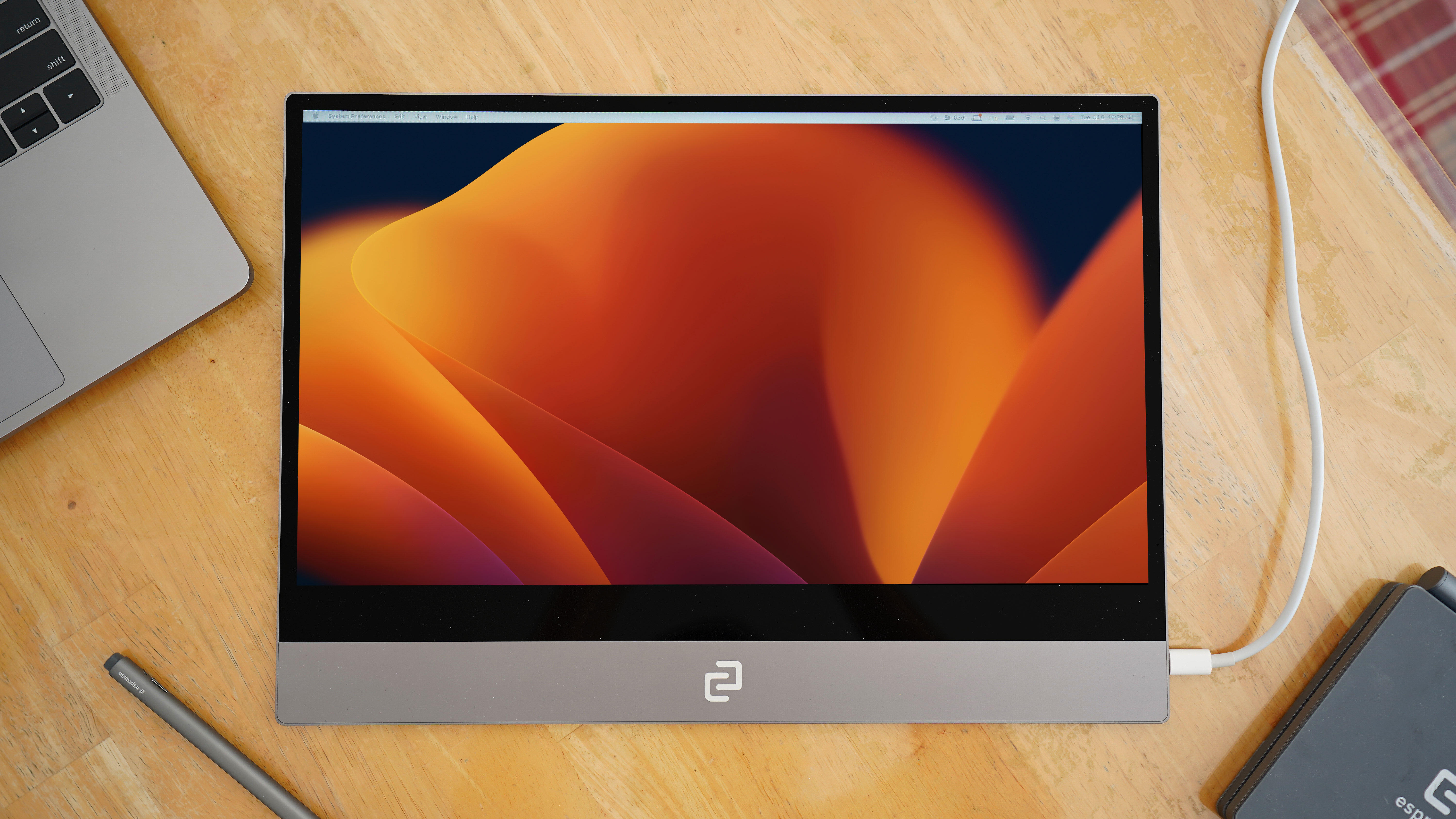That mostly holds true with the Espresso Display V2, save for the cheaper price bit. Fundamentally, the Display V2 serves as a primary or secondary screen, mirroring or extending from your desktop, laptop, or mobile device – much like every other portable monitor. Where the Display V2 differentiates itself is in design and form factor, which the company touts as the thinnest and lightest on the market.
Specifications
Designed for minimalists
Part of the reason for Espresso’s lofty asking price is its industrial design. The Display V2’s record-setting claim is backed by 5.3mm of thickness and 620g (for the 13-inch model). The monitor is as thin as portable monitors come, which makes it excellent for slipping into a backpack, flexing around the home office, and carrying from place to place. Equally impressive is the aeronautical-grade, aluminum unibody that gives the Display V2 its sturdy and metallic figure. Typically with cheaper monitors (often made with plastic), you’ll hear the slightest creaking when moving them around and fidgeting between orientations. That hasn’t been the case with this model, and I’ve felt comfortable enough tucking it in a bag with my laptop, books, and all. The monitor has two USB-C ports for display connection and nothing more. Gone is the 3.5mm headphone jack that was on the V1 model, and you won’t find any HDMI or USB port on the monitor, either. This can be a dealbreaker for some, especially if you’re eyeing a portable monitor to use as a standalone device. At the same time, the minimal, one-cable-rules-all approach is what makes the Display V2 as thin as it is. More: Best portable monitors to get work done
How it works
At this point, I should mention that the Display V2, by default, is sold as a monitor only. The magnetic stand that turns it into a mini iMac display costs extra ($69), as do all the other practical accessories that Espresso suggests you use. From my week of using the monitor, I think the magnetic stand plays too significant of a role to be sold separately. Not only does it allow you to easily rotate the Display V2 from landscape to portrait mode, but it offers two tilt points for flexible viewing. I’d happily pay for the accessory, but I wish I didn’t have to. Setting up the Display V2 was as simple as connecting the monitor to my primary device via the included USB-C cable. Unfortunately, other USB-C cables would register the Display V2 as a touchpad and not a monitor, so you’ll want to keep the bundled cable safe and secure (but if you want a $499 touchpad, then that’s cool, too). I tested the Display V2 with a MacBook Pro, Windows desktop, and Android phone, all of which successfully detected the monitor and naturally extended their content onto it soon after. With a 16:9, 60Hz, 1920 x 1080p panel, the Display V2 does an adequate job of displaying webpages, pictures, and videos. You can connect it to a Nintendo Switch as well, but don’t expect the best graphics and performance, even at $499. To make the most out of the touchscreen, you’ll want to download Espresso Flow, a Mac- and Windows-supported software that enables multi-touch gestures and motion-based detection for when you rotate the monitor. More: How to choose the right monitor layout for WFH There are bottom-firing speakers on the monitor, but you’re better off using the native one(s) of your connected device. It’s certainly astounding how Espresso managed to cram a functioning speaker into the chassis, but in its pursuit of slimness, the actual audio performance takes a major hit.
Finally, a touchscreen for Mac
Industrial achievements aside, the Display V2 impressed me the most by doing something that even Apple cannot: giving touchscreen support for my MacBook. As many ZDNET contributors and readers have opined, a MacBook with a touchscreen would make one of the best productivity machines even better. While the Display V2 doesn’t turn your actual MacBook display into a touchscreen, it does replicate the content, allowing you to interact with taps, presses, and swipes. While it was fun interacting with MacOS in a different manner, the operating system was not designed for it. That means that certain elements, like the red exit button in Safari, are way too small to tap on. Expect frequent mis-presses that only Espresso’s $79 stylus can solve. More: Dear Apple, we need a touchscreen MacBook
Should you buy it?
The Espresso Display V2 is the thinnest portable monitor in the world, which means, by design, there are benefits and drawbacks. For traveling business people, hybrid workers, and digital nomads, the enhanced portability and simple set-up will be greatly appreciated. For remote and stationary workers, the ability to flex between display orientations and interact via touch comes in handy. The things I’d watch out for are the subpar speakers, additional upcharges for accessories, and the glossy display panel, especially if you work near windows. If you can shoulder these limitations, then the Espresso Display V2 is as good as portable monitors get.
Alternatives to consider
Still on the fence? Here are some formidable alternatives to the espresso Display V2: The Lenovo ThinkVision M14t is another touchscreen-enabled, portable monitor that supports USB-C passthrough. While not as flexible as espresso’s monitor-stand setup, you’re still able to tilt the display up and down and station it in portrait mode. There are no built-in speakers, though. If you’re eyeing a portable monitor for on-the-go gaming, then check out the ASUS ROG Strix. It has a much larger panel at 17.3 inches and refreshes at 240Hz (compared to the espresso’s 60Hz). ASUS also crammed in a built-in battery that should last up to three hours per charge. For a no-frills portable monitor, we’d recommend this 15.6-inch, touchscreen offering from ViewSonic. It’s not competing with espresso to be the thinnest display out there; the thick side tray houses two USB-C ports, an HDMI port, and a 3.5mm headphone jack.
